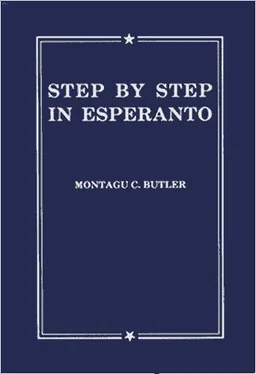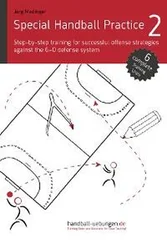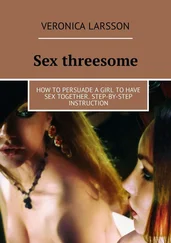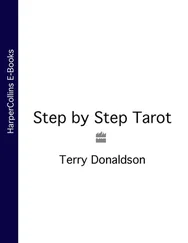Sirelates to the Subject (it is a “reflexive” pronoun).
The -ucorrelatives are 3rd person. Ĉiu sin amas, everyone loves himself , equally whether this means ĉiu el ili, el ni,or el vi.
Scintillate, scintillate, globule lucific,
Fain would I fathom thy nature specific.
Loftily poised in aether capacious,
Strongly resembling a gem carbonaceous.
The prefix retro-(unofficial, but sometimes met, especially in technical writings) denotes backwards: with action ( order, motion) reverse or counter to that customary (cp. retroactive, retrospective), Retropedali, back-pedal. Retropaŝi, take a retrograde step. Retroen! Back! Retroigi( reverse ) la movon de maŝino.
Grimpi, clamber (hand over hand), climb up. Cp. rampi, creep, crawl .
Parafino= paraffin hydrocarbon (in general). Parafina vakso,p.wax. Petrolo= petroleum in wide sense: (a) crude mineral oil ( kruda petrolo); (b) Paraffin (lamp) oil, kerosene ( lampoleo, lampa petrolo). Petrola lampo,paraffin lamp. Benzino,motor spirit, petrol (for car). Benzeno,benzene (C 6H 6).
With an adjectival root, simple ‑ois often more appropriate than ‑ecoor ‑aĵo. Vero kaj belo, truth and beauty (in general). Vereco, trueness, veracity; beleco, beautifulness. Veraĵo, something true, a truth; belaĵo, a beautiful thing.
Environment may congruous be
But none so gratifies as that
In greater or in less degree,
Which constitutes one’s habitat.
Fakte oni diras Ĉilio, Ĉiliano. — Ed.
La Zamenhofa nomformo «Grenlando» arkaikiĝis. Nun oni preferas diri Gronlando, Gronlandano. — Ed.
A proposal to use ‑ioinstead of ‑ujofor land-names was rejected by the Lingva Komitato in 1909, and again, after full discussion, by 74 votes to 5, in 1922, with an “insista kaj forta konsilo” to use ‑ujo.Zamenhof wrote: “Ni devas ĉiam uzi tiujn nomojn kun la sufikso uj”; that a change from ujto ishould be made “nur se nia Lingva Komitato tion postulus,” and that he regarded any decision duly made by the L.K. as authoritative.
The Zamenhofan system ( 994– 995) in general follows international usage. To replace ‑ujoby ‑iowould introduce many difficulties. It is a change in the Fundamento . If (a) ‑iis a suffix, it stands alone as an anomaly, contrary to the spirit of the language (in which every suffix is an independent root: klubano= ano de klubo,but Svisiois not io Svisa). If (b) ‑iis not a suffix, but part of a new root, the memory would be burdened with a host of arbitrary new roots: in addition to Dan, Sved, Svis,we should have to learn Dani, Svedi, Svisi(forms wholly uninternational: one does not talk of Danians, Swedians, Swissians ); and we should have to remember that while from Aŭstraliowe get Aŭstraliano(not Aŭstralo), from Daniowe get Dano(not Daniano). In short, we should introduce a chaos of irregularities.
To distinguish: a frambogrows on a bramble .
cifero: signo uzata por skribi nombrojn [NPIV]. ( Publisher’s note. )
After ‑onouse de,not da. Duono de funto (= duonfunto) da teo.The fraction is not the measure: the measure is duono de funto (da).One does not say Unu da funto!
[Dubinda argumento. Oni ja diras «deko da ovoj», «miliono da tunoj». — Ed. ]
Duon-is used also for step- . This is illogical, for a step-brother is not a half-brother: the first is not a blood relation, the second is. Stifa(G. Stief‑ ) Step- (= relative through the second marriage of a parent, but not by blood) is occasionally met, and better, though unofficial. E.g., stifa frato, step-brother; stifa patro, stepfather. A prefix sti- (stifrato, stipatro)might be better still.
la nombron 615. — Ed.
de la rezultanta nombro … — Ed.
Tabelo= Table (list in tabular form). Cp. tabulo, board, plank; tablo, table (article of furniture).
Your immediate environment submit to circumspection,
Ere you alter your locality by muscular projection.
Note that the Esperanto usage is regular and logical (some call it “the logical tense”). The English change of verb is an English idiom. It applies only to reported speech after a past tense ( keafter ‑is).
Fully expressed, these sentences would be Vi aspektas, kiel vi aspektus, se vi estus vid-inta (‑anta, ‑onta, ‑unta) fantomon (1107). Or … kiel vi aspektus, vid-inte (‑ante” ‑onte, ‑unte), fantomon.Or, Vi aspektas (ŝajnas esti) vid-inta, (‑anta, ‑onta, ‑unta) fantomon.Briefly: Ŝajnas, ke vi vidis (‑as, ‑os, ‑us) fantomon.
While self-inspection it neglects,
Nor its own foul condition sees,
The pot unto the pan objects
Its sooty superficies.
In a participial noun e.g. ( ‑ato, ‑anto) the ois conventionally regarded as an abbreviation of ‑ulo,the forms ‑atulo, ‑antulobeing seldom used. Konato(not konatulo), an acquaintance, Estonto, a man of the future; estonteco, futurity; estontaĵo, a thing of the future.
Ont, ant, intare called active participles ( aktivaj participoj). They describe the doer of the action. (An ant is an active animal!) Ot, at, itare called passive participles ( pasivaj participoj). They describe the one to whom the action is done. Cp. precipit ant (active); precipit ate (passive).
Читать дальше












